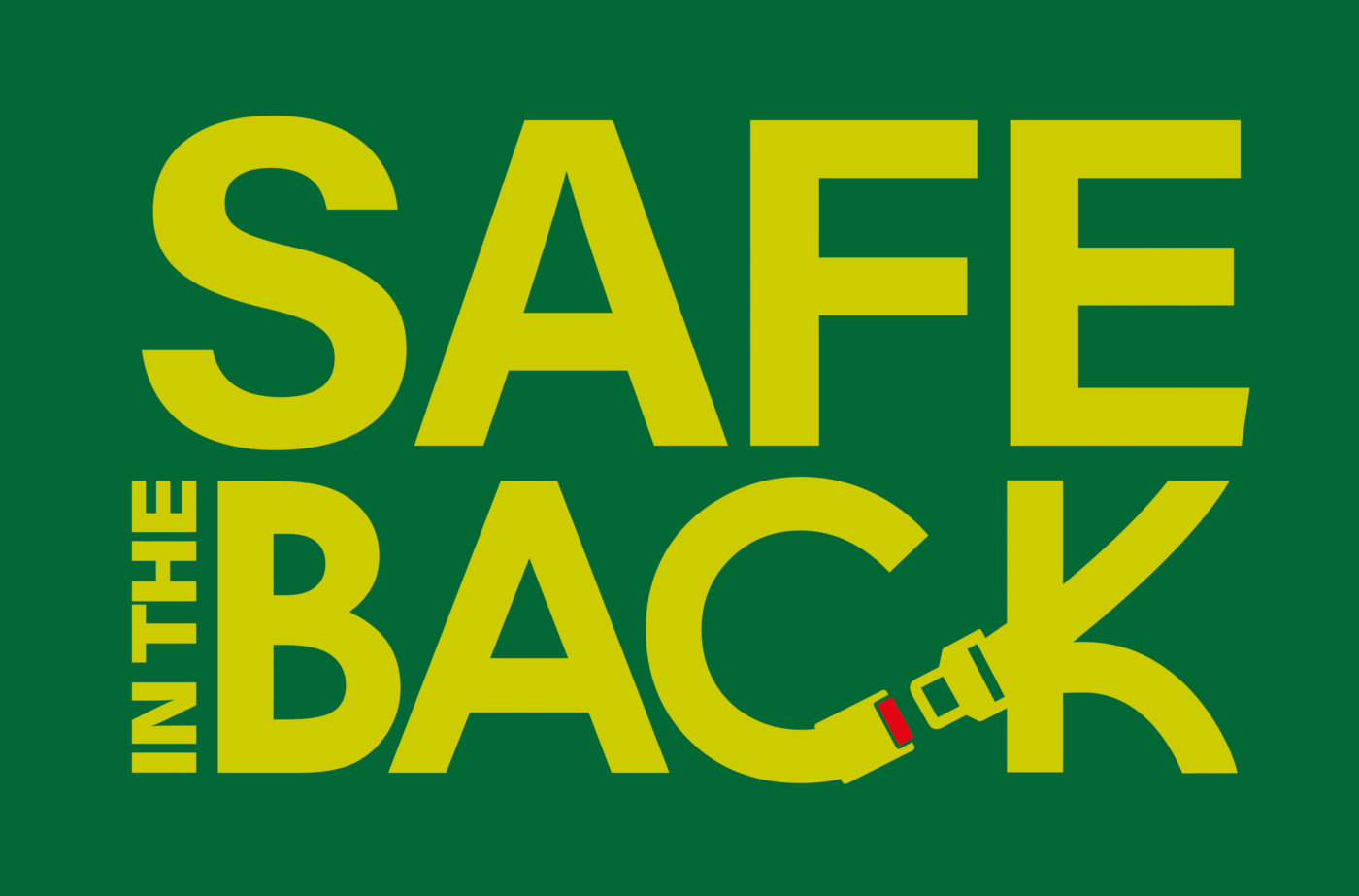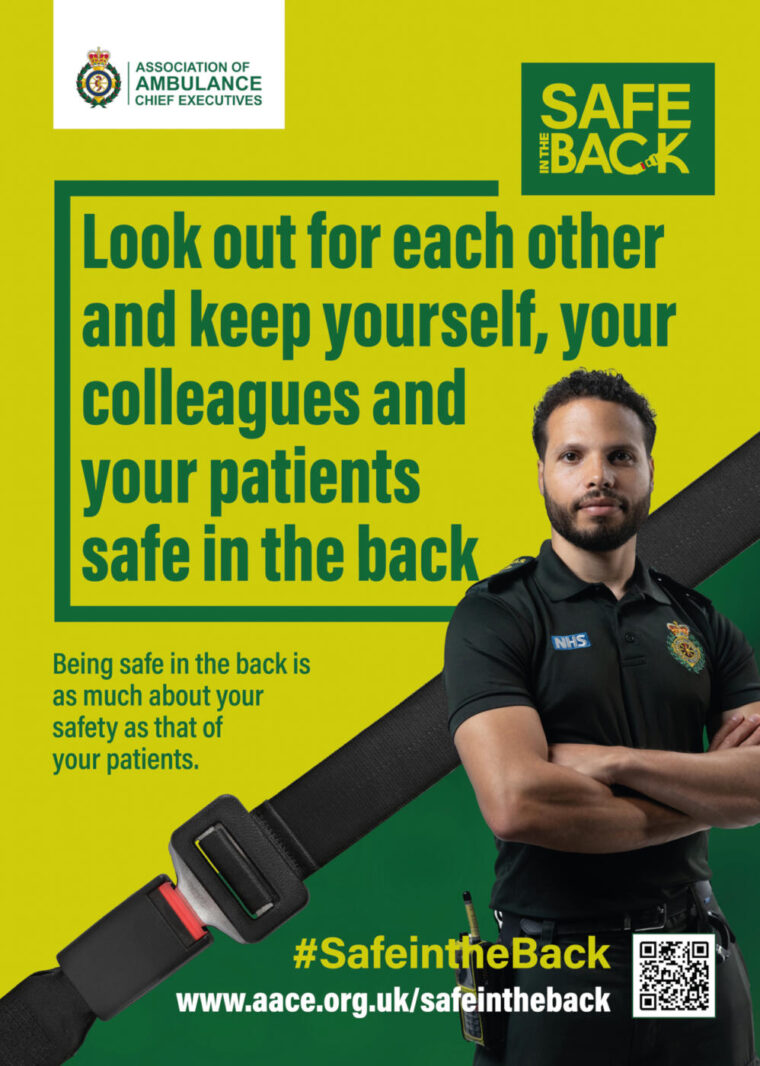- On average, at least one road traffic collision that happens each day will involve an ambulance – resulting in minor bumps and scrapes – to major accidents
- Being safe in the back is as much about your safety as that of your patients
- Look out for each other and keep yourself, your colleagues and your patients safe in the back
The #SafeInTheBack campaign is being led by the Association of Ambulance Chief Executives on behalf of all UK ambulance services and is designed to highlight the serious implications of not wearing seatbelts or harnessing patients properly in the back of ambulance vehicles.
Incidents have been identified across the country of road traffic collisions (RTCs) involving ambulances that have resulted in casualties or fatalities of staff and patients.
The issue has been discussed in national ambulance forums and one of the safety aspects considered was the tendency for ambulance staff to not always wear seat belts and / or to safely secure their patients in the back of ambulance vehicles.
>> Download print assets here, and download the video and social clips here.
Researching the problem
In late 2022 AACE undertook a survey of frontline staff across UK ambulance services to capture experiences and opinions of the current practice in relation to the wearing of seat belts and application of harnesses in the back of ambulances. We wanted to better understand the reasons why, on occasions, seatbelts and restraints may not be applied and to identify how safety can be improved in this respect.
Some of the key findings showed:
- Many staff did not know that it was the driver’s ultimate responsibility to ensure that all staff and patients in the vehicle were wearing seatbelts / harnesses before setting off.
- A high proportion of staff did not wear a seat belt during any part of their most recent journey in an ambulance.
- A relatively low percentage of staff wore seat belts during their entire most recent journey in an ambulance.
Watch the campaign video here.
The #SafeInTheBack Awareness Campaign
The #SafeInTheBack campaign is aimed at frontline ambulance staff with the goal of effecting behavioural change so that people will comply with the statutory requirement / legislation and safe use of seat belts and harnesses in the back of an ambulance.
Put simply, it is the law that anybody travelling in the back of an ambulance MUST wear a seatbelt, the only exception being the specific times when a patient is receiving clinical care from the staff member concerned, which should be a rare occurrence. Once that care has been delivered the staff member is legally required to then re-engage their seatbelt to continue the journey.
In 2023 an experienced ambulance clinician received an 8 month custodial sentence because they failed to correctly apply the harness on a patient, who subsequently died when the ambulance was involved in an RTC.
Key Campaign Messages
- Not wearing seatbelts in the back should not be considered ‘normal’.
- Patient treatment and patient safety are equally important.
- Drivers are primarily responsible for ensuring all seatbelts are fastened, but everyone must play their part.
- Challenging others who do not wear seatbelts is a good thing.
Key Objectives of the Campaign
- To develop an awareness campaign with a focus on safety in the back of ambulances, in relation to RTCs.
- To increase compliance with legislation in the use of safety belts and appropriate harnesses/securing devices for those travelling in the back of an ambulance – whether patient or staff, or someone accompanying either.
- To highlight awareness of this issue from Board level of all UK ambulance services right the way through to frontline staff.
The Campaign Project Team
The #SafeInTheBack Project Team is comprised of a small steering group which includes AACE colleagues, patient safety and driving experts from ambulance trusts, union reps and a specialist expert in driver behavioural change. It is being financially supported by ambulance service insurance brokers Marsh and insurers QBE.
Get involved with #SafeInTheBack !
Download the campaign assets here:
Logos, posters and guidelines (Zip file of all Print assets)
Campaign video and social media shorts (individual Video clips)


